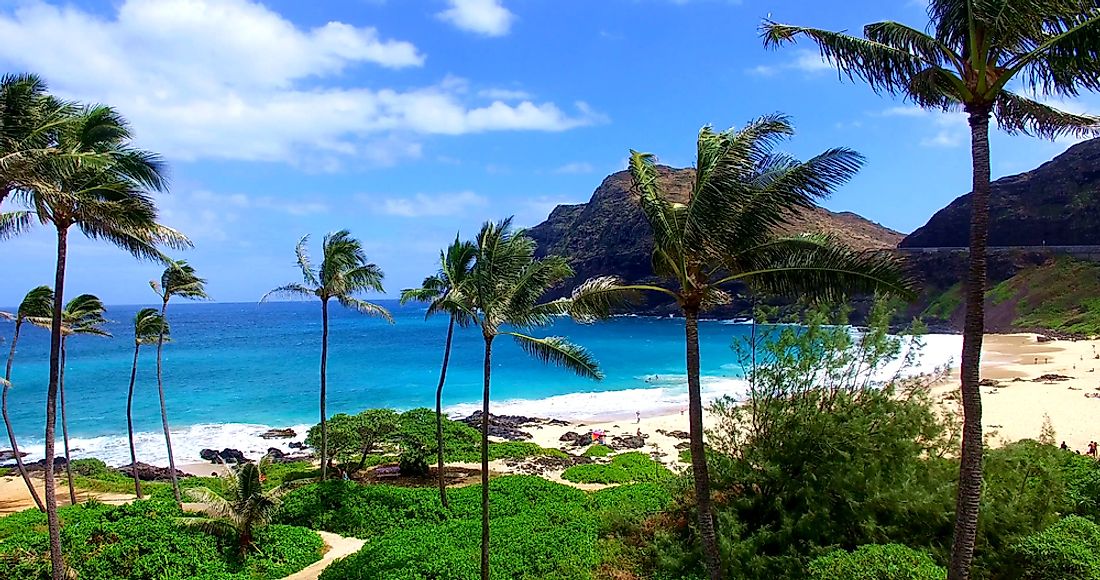Are Palm Trees Native to Hawaii?

Hawaii is a US state situated in Oceania, and it is made up of islands. There are eight Hawaiian islands, and seven have permanent inhabitants. Hawaii has a tropical climate which is ideal for palm trees. Palm trees range from shrubs, perennial lianas, and trees which fall under the scientific family of Arecaceae and the order arecales. The trees thrive in hot climates which include tropical, sub-tropical, and warm temperate climates. Most palm trees are straight, unbranched and are either feather-leaved or fan-leaved. The leaves are big and are green throughout the year. The Coco de Mer has the largest seeds among all plants and they can weigh up to 66 pounds.The Raffia palms have the biggest leaves among all plants and the leaves can reach lengths of 82 feet and a width of 10 feet. The Corypha palms have the largest inflorescence among all plants; it can get to 25 feet tall and hold several flowers.
Hawaii’s Native Palm
Despite the favorable climate, Hawaii only has one palm tree species native to the island. The date palms, coconut palms, traveler's palms, and bottle palms found on the island are foreign to the land. Most of these palms were introduced to the island by early Polynesian settlers while other species were brought in later. The Loulu Palms are the only palm trees native to Hawaii. The palm tree is also used for landscaping in some parts of the US, and it is said to be easier to grow and manage, unlike the exotic palm tree species. The native Hawaiians ate the immature fruits of the Loulu palms.
Loulu Palm
The Loulu palm is also known by the scientific name Pritchardia kaalae or Waianae Range pritchardia. This palm tree has about 29 species, and about 19 of the species are native to Hawaii while others can be found in Tahiti and Fiji. One species of the palm tree is native to the western part of O’ahu Island in Hawaii, and it grows near springs in the highland areas of the forests in Wai’anae Range. The species is named Loulu Hiwa, and it does well in areas with altitudes reaching 2,500 feet above sea level. The Loulu palm species is slow growing, and it grows to a height of 25 feet with the trunk reaching a diameter of one foot.
Endangered Species
In the past, there were Loulu palm forests around Hawaii, but with continued human activity the forests were cleared, rats and pigs also pose a threat to the palm trees as they damage the trees and eat the seeds of the trees. There were less than 130 individual trees left in the wild by 1998, and the Loulu palm is listed as one of the most endangered tree species in the US. Chris Dacus, a landscape architect, has formed a group aiming to grow and maintain Loulu palms.











